Recent Water Damage Posts
The Most Common Types & Causes of Flooding | SERVPRO® of Jackson/SE Ingham County
5/26/2022 (Permalink)
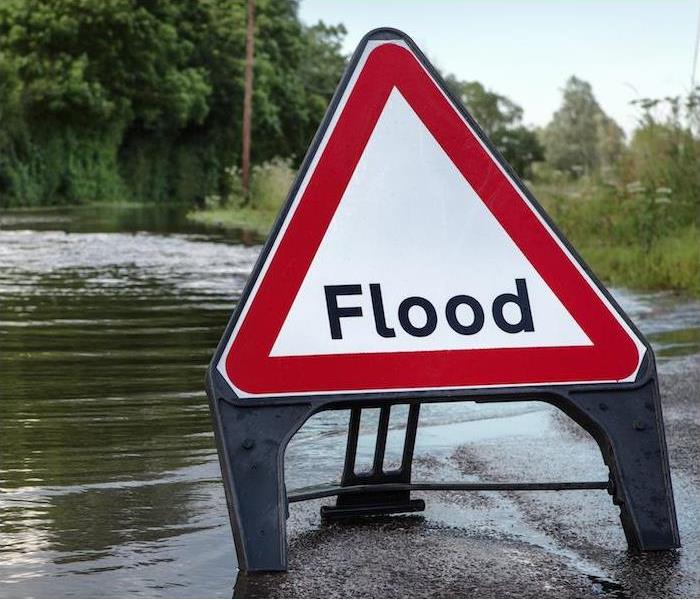 Regardless of the cause of the flooding, SERVPRO of Jackson/SE Ingham County has the team to help you recover from any disastrous event.
Regardless of the cause of the flooding, SERVPRO of Jackson/SE Ingham County has the team to help you recover from any disastrous event.
Flooding is the most widespread natural disaster, claiming more lives each year in the United States than hurricanes, tornadoes or lightning. It can have an impact on anything from individual houses whose property gathers surplus water to whole towns and cities.
Flooding affects all 50 states and every U.S. territory, although there are commonalities in their varieties and causes. There are three forms of floods, and they generally occur because of four different causes.
3 Types of Natural FloodingFlash floods commonly occur when heavy rain passes or sits over a region and overwhelms the ground’s capacity to hold the moisture. Excess water rushes off, carrying anything with it from trash, automobiles and other debris with it.
River flooding is precisely what it sounds like. When a river’s banks are unable to retain the surplus water, the water spills over the brink, causing the areas around the river to be flooded, often causing significant damage.
Coastal floods occur when storm surges or cyclonic activity force ocean or gulf levels to rise to flood levels in places near significant bodies of water.
The 4 Most Common Causes of Natural FloodingHeavy rainfall. Excessive rainfall from storms, or storms that sit and linger over a region for a lengthy period of time, may generate flash floods or river flooding. Rain floods are more likely in urban areas because of the increased proportion of concrete and asphalt, which means there isn’t enough soil to absorb all that water. Over the next 30 years, over 3,000 properties in Lansing have a higher than a 25% probability of being severely impacted by floods. This equates to 7% of all homes in the city. Flooding may create a whole host of problems for Lansing citizens, including disruptions to utilities, first responder services, transportation and highways, all of which have a negative influence on the area’s economic well-being.
Oceanic activity. Storm surges, hurricanes and high tides can cause water levels to increase in waves, which can wreak havoc on coastal cities.
Dams and levees failing. The most recent example would be the tragic levee breakdowns during Hurricane Katrina in 2005. When fractures form in levees or dams, or when excess pressure exceeds the dam’s capacity to control the surge of water behind it, the structures break.
Snowmelts and ice dams.. Snow and ice may accumulate over the course of a winter in areas of the nation where heavy snow and extended freezing temperatures are prevalent, and when they begin to melt, they produce rivers of water to pour through nearby cities. Ice dams, also known as ice jams, occur when rivers get blocked by built-up ice transported downstream, forcing the banks to overflow.
Regardless of the cause of the flooding, SERVPRO has the tools and teams to help your home or business recover from its disastrous effects. Contact us anytime when flooding or water damage makes a mess in your life.
The Timeline of Water Damage and Its Destructive Effects | SERVPRO® of Jackson/SE Ingham County
5/24/2022 (Permalink)
 SERVPRO of Jackson/SE Ingham County is your 24/7 water restoration expert. Call us right away if you need immediate service.
SERVPRO of Jackson/SE Ingham County is your 24/7 water restoration expert. Call us right away if you need immediate service.
Small spots of water spots and barely leaking faucets can seem basic and are often overlooked. However, you should never underestimate the damage caused by moisture in the home. An average household leak can waste up to 10,000 gallons of water in a year.
The damage brought on by standing water progresses fast, seeping into your walls, soft surfaces and floors. It’s most important to begin dealing with the issue immediately to get the best restoration results.
This timeline gives you a good synopsis of water damage:
In the First 24 HoursIf you live in a house, there is a one in four chance of a flood damaging your home within a 30-year period in a high-risk area. Knowing what to do next is essential.
The first 24 to 48 hours after flooding or water damage are crucial. Certain items will immediately fall victim to water’s disastrous effects.
Soft and absorbent items like fabric furnishings and upholstery will soak in the water. Wooden structures can swell and become deformed as well.
Even scarier, your personal belongings such as books, photos and important documents are at risk of warping beyond repair. During this timeframe, mold begins to develop, so taking action fast is essential.
At SERVPRO, our expertise, combined with a “restore vs. replace” mentality, can help you save money while keeping your precious and irreplaceable memories safe. If any items are unfortunately beyond restoration, we will communicate this to you. These items will be removed quickly to prevent the spread of moisture and lessen the drying time of the ones we can restore.
Within the First WeekAfter the first 24 hours, water damage will progress further and quickly. Mold growth will explode at this point if in the presence of moisture; as the mold sets in it can even damage your home’s structure.
Additionally, porous surfaces, such as wood surfaces and walls will become increasingly compromised, and metal surfaces will start corroding.
After One WeekAt all costs, you must avoid allowing moisture to stay present for long periods of time. Standing water and moisture can cause extremely destructive and irreversible effects.
As time progresses, the effort required and the costs of restoration will increase exponentially, along with the risks of significant structural damage.
How SERVPRO Will HelpWe begin the SERVPRO restoration process with our first call, hopefully within the first 24 hours. Service work typically starts with a full-scale extraction of standing water, helping to prevent the spread of moisture further into your home.
It’s very likely that your furniture, floors and personal belongings that have been affected will need deep cleaning, sanitizing and deodorization. Once we remove most of the water, our experts will use industry-leading equipment that helps get rid of the water that can’t be seen.
After these initial steps, your home may need construction work to get your property back to its preloss condition. This step could include minor repairs or rebuilding entire areas of your home.
At SERVPRO, we like to simplify the restoration process by taking care of the initial damage mitigation, as well as rebuilding the affected areas of your home or business. We keep you up to date on every single step, doing our best to get you back in action as soon as possible.
Regardless of the type of water damage sustained, SERVPRO has the tools and teams to help your home or business recover. Contact us 24⁄7 when you need a dependable team to help you recover.
The Most Common Types & Causes of Flooding | SERVPRO® of Jackson/SE Ingham County
4/6/2022 (Permalink)
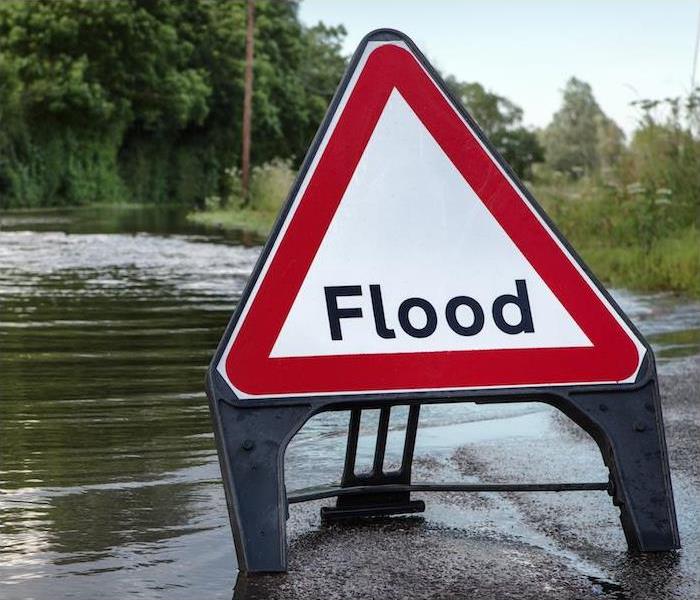 Regardless of the cause of the flooding, SERVPRO of Jackson/SE Ingham County has the team to help you recover from any disastrous event.
Regardless of the cause of the flooding, SERVPRO of Jackson/SE Ingham County has the team to help you recover from any disastrous event.
Flooding is the most widespread natural disaster, claiming more lives each year in the United States than hurricanes, tornadoes or lightning. It can have an impact on anything from individual houses whose property gathers surplus water to whole towns and cities.
Flooding affects all 50 states and every U.S. territory, although there are commonalities in their varieties and causes. There are three forms of floods, and they generally occur because of four different causes.
3 Types of Natural Flooding
Flash floods commonly occur when heavy rain passes or sits over a region and overwhelms the ground’s capacity to hold the moisture. Excess water rushes off, carrying anything with it from trash, automobiles and other debris with it.
River flooding is precisely what it sounds like. When a river’s banks are unable to retain the surplus water, the water spills over the brink, causing the areas around the river to be flooded, often causing significant damage.
Coastal floods occur when storm surges or cyclonic activity force ocean or gulf levels to rise to flood levels in places near significant bodies of water.
The 4 Most Common Causes of Natural Flooding
Heavy rainfall. Excessive rainfall from storms, or storms that sit and linger over a region for a lengthy period of time, may generate flash floods or river flooding. Rain floods are more likely in urban areas because of the increased proportion of concrete and asphalt, which means there isn’t enough soil to absorb all that water. Over the next 30 years, over 3,000 properties in Lansing have a higher than a 25% probability of being severely impacted by floods. This equates to 7% of all homes in the city. Flooding may create a whole host of problems for Lansing citizens, including disruptions to utilities, first responder services, transportation and highways, all of which have a negative influence on the area’s economic well-being.
Oceanic activity. Storm surges, hurricanes and high tides can cause water levels to increase in waves, which can wreak havoc on coastal cities.
Dams and levees failing. The most recent example would be the tragic levee breakdowns during Hurricane Katrina in 2005. When fractures form in levees or dams, or when excess pressure exceeds the dam’s capacity to control the surge of water behind it, the structures break.
Snowmelts and ice dams.. Snow and ice may accumulate over the course of a winter in areas of the nation where heavy snow and extended freezing temperatures are prevalent, and when they begin to melt, they produce rivers of water to pour through nearby cities. Ice dams, also known as ice jams, occur when rivers get blocked by built-up ice transported downstream, forcing the banks to overflow.
Regardless of the cause of the flooding, SERVPRO has the tools and teams to help your home or business recover from its disastrous effects. Contact us anytime when flooding or water damage makes a mess in your life.
Flooded Basement
3/14/2022 (Permalink)
A basement can flood at anytime, although flooding most often occurs during heavy rainfall. During the spring months, rainfall is likely to happen and can be heavy at times.
This is a good time of year to clean out gutters & downspouts, clear debris from storms drains and add dehumidification to damp basements.
If water damage is not handled quickly and properly, it can cause severe damage to your homes structure, not to mention the potential harmful health affects of mold. Remember, the longer you wait, the worse the problem could become.
Here at SERVPRO of E. Jackson & S.E. Ingham Co., we are flooded basement specialists:
- We are available 24/7
- We are a preferred vendor to many local & national insurance companies
- Our technicians are highly trained in water restoration techniques
- We have advanced inspection & extraction equipment
- We abide by the S500 IICRC restoration standards
If water damage, from the smallest overflow from a toilet to full house flood from a pipe burst, threatens your home or office call us at (517) 782-8533. We are here to help and care for not only your home or office, but for you as an individual. We are a family owned business and know that each job is not simply a job, but is someone allowing us to come into their lives during a very stressful event. Our ultimate goal is to help make it a little less stressful on you.
Sump Pump maintenance
3/14/2022 (Permalink)
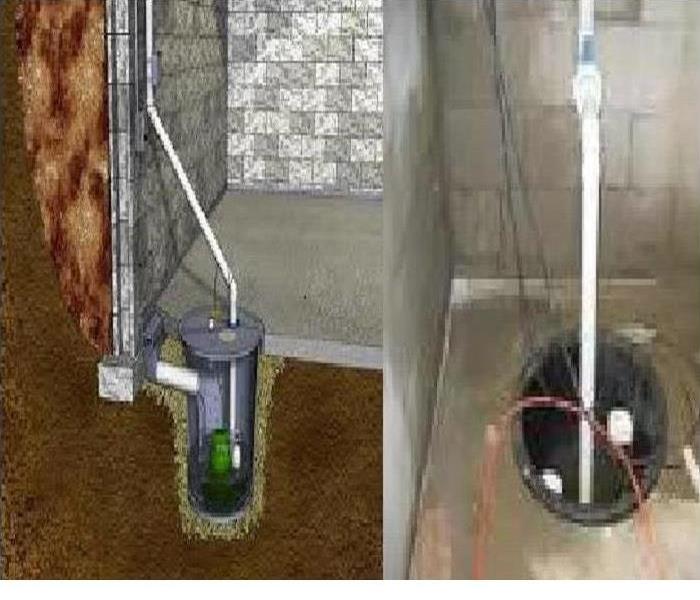 Sump Pump
Sump Pump
A sump pump is a small pump that is installed to help keep the area underneath a building dry and to prevent it from flooding. They are installed in the lowest part of the basement or a crawl space. They are normally installed in specially constructed pits which is where water flows into through drains or through migration through soil. The pump’s job is to pump the water out of the pit and away from the building.
Here are some tips to help with the maintenance of your sump pump so as to prevent water intrusion in your home:
- Make sure the pump is plugged into a GFCI outlet
- Make sure the cord in in good shape
- Check the pump occasionally to ensure it is running and the breaker has not tripped
- Ensure the pump is standing upright in it’s crock
- Periodically pour a bucket of water in the pit to make sure the pump starts automatically
- Remove the pump from the pit and clean the grate on the bottom
- Check the outlet pipes to ensure they are tightly joined together and are draining at least 20ft from the foundation
- Ensure the vent hole in the discharge pipe is clear
- Install a backup battery in case of power failure
Should you still get water in your basement from sump pump failure or inability of sump pump to keep up due to the amount of water coming in, call SERVPRO of E. Jackson/SE Ingham Co. and we can help with the clean up. We will address your structure as well as any affected contents and set the proper drying equipment to ensure your basement is thoroughly dried out. We can be reached @ 517-782-8533.
We Specialize In Water Cleanup and Restoration
2/17/2022 (Permalink)
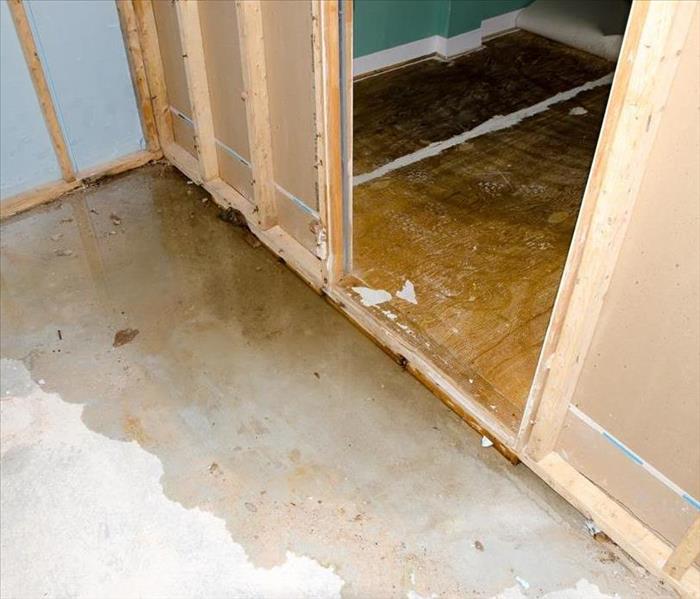 SERVPRO of Jackson/SE Ingham County are your flooded basement specialists!
SERVPRO of Jackson/SE Ingham County are your flooded basement specialists!
We're closing in on springtime, which means an increase in rainfall and potential for flooding in your home. Although every room in your house can have its own water issues, basements are inherently susceptible to flooding and water damage due to them being partially or fully below ground level. But there are several reasons as to why your basement could flood. Here's a list so you can keep an eye on your property and prevent water damage as much as possible.
- Water supply-line break or hot-water tank failure
- Sanitary sewer backup
- Storm sewer backup
- Heavy rain causes surface water to pool around your home
- Foundation drainage failure
- A blocked or failed sewer lateral pipe
Water can get into your home in numerous ways, and your basement is at an increased risk, especially during the weather transition as snow melts and drains off. A flooded basement can jeopardize your homes safety and structural integrity, therefore putting you and your family's safety at risk. The longer flood water sits in your home, the worse the problem gets and the longer the restoration process will take.
If your basement is flooded, give SERVPRO of Jackson/SE Ingham County a call today. We're ready 24/7 and we are the flooded basement specialists!
Spring Flood Tips
2/7/2022 (Permalink)
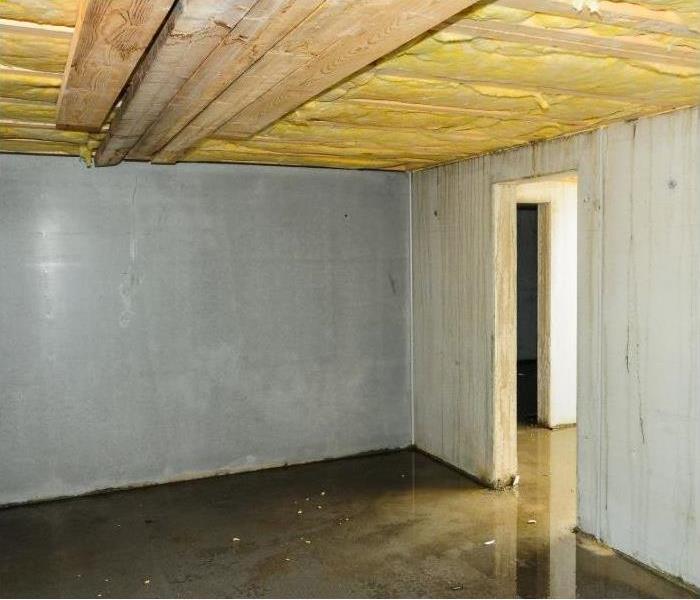 If you experience a flood this spring, no matter the size, call your friends of SERVPRO Jackson/SE Ingham County!
If you experience a flood this spring, no matter the size, call your friends of SERVPRO Jackson/SE Ingham County!
Even though we might have 4-6 weeks left of winter, Michigan's sometimes erratic weather patterns can cause unpredictable early spring thawing, leaving unprepared properties at risk. Follow these tips to prepare your property for that inevitable upcoming spring thaw!
Watch for Pooling Water
Take a look around your property for places where water may be pooling. It may be necessary to adjust your gutters and/or downspouts to drain water away from the property. Check your downspouts and gutters to make sure they are clear of debris.
Maintain Sump Pump
If you have a sump pump, check to be sure it is in working order before the ice/snow starts melting and water levels start rising. Consider a back-up generator to ensure your pump works when you need it most.
Raise Storage Goods
Consider using shelving or pallets to get your storage goods and valuable items off the ground in case of a flood. In most cases during a small flood, raising your possessions just a few inches off the ground can preserve them.
Cut Power if Necessary
If rising water is approaching the level of electrical outlets, you risk having a live current flow through all the water. Cut the power if you can safely do so without standing in water. Otherwise, evacuate and contact an electrician to cut the power before you go back in for recovery.
Act Fast
If you do experience a flood, acting fast is the name of the game in order to preserve your property and possessions. Call SERVPRO of Jackson/SE Ingham County to extract the water and mitigate any related mold damage. Our expert technicians will make it look "Like it never even happened."
Frozen Pipes
1/14/2021 (Permalink)
Why Pipe Freezing is a Problem
Water has a unique property in that it expands as it freezes. This expansion puts tremendous pressure on whatever is containing it, including metal or plastic pipes. No matter the strength of a container, expanding water can cause pipes to break.
Pipes that freeze most frequently are:
- Pipes that are exposed to severe cold, like outdoor hose bibs, swimming pool supply lines, and water sprinkler lines.
- Water supply pipes in unheated interior areas like basements and crawl spaces, attics, garages, or kitchen cabinets.
- Pipes that run against exterior walls that have little or no insulation.
How to Prevent Frozen Pipes
- Keep garage doors closed if there are water supply lines in the garage.
- Open kitchen and bathroom cabinet doors to allow warmer air to circulate around the plumbing. Be sure to move any harmful cleaners and household chemicals up out of the reach of children.
- When the weather is very cold outside, let the cold water drip from the faucet served by exposed pipes. Running water through the pipe - even at a trickle - helps prevent pipes from freezing.
- Keep the thermostat set to the same temperature both during the day and at night. By temporarily suspending the use of lower nighttime temperatures, you may incur a higher heating bill, but you can prevent a much more costly repair job if pipes freeze and burst.
- If you will be going away during cold weather, leave the heat on in your home, set to a temperature no lower than 55° F.
If you have a busted pipe address the water damage immediately by calling SERVPRO of E. Jackson/SE Ingham Counties at 517-782-8533
Melting Snow
2/17/2020 (Permalink)
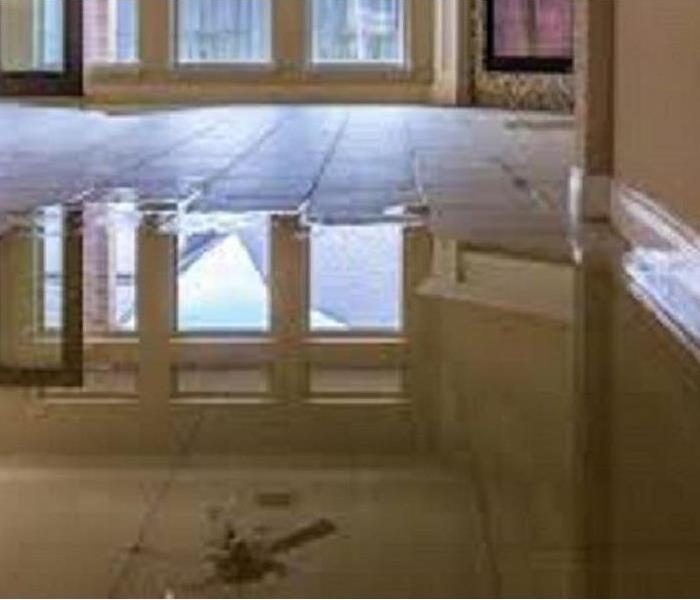 Melting Snow can cause water damage just like heavy rains.
Melting Snow can cause water damage just like heavy rains.
While we still have snow on the ground in Central Michigan, it won't be long before we'll see it go. Sudden melting snow turns to excessive water which can cause the same damage as seasons with heavy rainfall. Your soil surrounding your home's foundation and basement can become oversaturated, which may result in expensive structural damage or waterlogged flooding.
When water enters your home through your foundation, it's often not covered under your homeowners insurance. We can still help you. We'll provide you with an estimate for our services, and communicate with you so you know exactly what you'll be paying for. Our estimating program is industry standard, so we can't overcharge you!
Need help? Give SERVPRO of E. Jackson/SE Ingham Counties a call at 517-782-8533.
I've had Water Damages too!
2/17/2020 (Permalink)
At SERVPRO of E. Jackson/SE Ingham Counties, we pride ourselves in customer service, and compassion for our customer. I know what you're going through, because I've been there.
I've been in my house 20 years, and have had my SERVPRO team to my house on several occassions. One memorable Christmas day, when a pipe leading to my sump pump was spewing water through out my finished basement. Another time when my husband thought he was a plumber (he is not!), and flooded my kitchen. Yet another time when we experienced an Ice Dam on our roof, affecting two rooms in our home.
So, yeah, been there done that. It's no fun. I understand, and we're here to help. Call us at 517-782-8533.
How to Thaw a Frozen Pipe
12/4/2019 (Permalink)
 Broken frozen pipe
Broken frozen pipe
If a pipe has broken, turn off the water at the main shutoff valve, which is usually at the water meter or where the main line enters the house. If the water is still running and no pipes have burst, you can take the following steps. (Of course, if you suspect a more serious problem, call a plumber.)
Turn on the faucet. As you heat the frozen pipe and the ice plug begins to melt, you want the water to be able to flow through. Running water through the pipe, as cold as it is, will help melt ice in the pipe.
Apply heat to the section of pipe using an electric heating pad wrapped around the pipe, an electric hair dryer, or a portable space heater (kept away from flammable materials), or by wrapping pipes with towels soaked in hot water. As tempting as it may be, do not use a blowtorch, a kerosene or propane heater, a charcoal stove, or any device with an open flame; the high heat can damage the pipes or even start a fire.
Apply heat until full water pressure is restored. Check all other faucets in your home to see whether you have additional frozen pipes. If one pipe freezes, others may freeze, too.
Don't forget to CALL SERVPRO so we can assist in the cleanup from a frozen pipe.
Locating your water shut off valve
11/27/2019 (Permalink)
 Water valve shut off tag
Water valve shut off tag
Do you know where your main water shut off valve to your house is located? This valve is usually in the basement or on an outside wall in a utility area of the house. The main shutoff valve allows a full flow of water through the pipe when it's open. Turning off this valve (by turning it clockwise) cuts off the water supply to the entire house.
Knowing where this valve is BEFORE an emergency could save you thousands of dollars in water damage.
Imagine if you came home from work, or home from a vacation to water running through out your home. First thing is always stop the source of the damage. Shutting off the water at the main valve accomplishes just that.
Be proactive: locate the valve and tag it so you can locate it easily in the event of an emergency.
Tips for homeowners
9/17/2019 (Permalink)
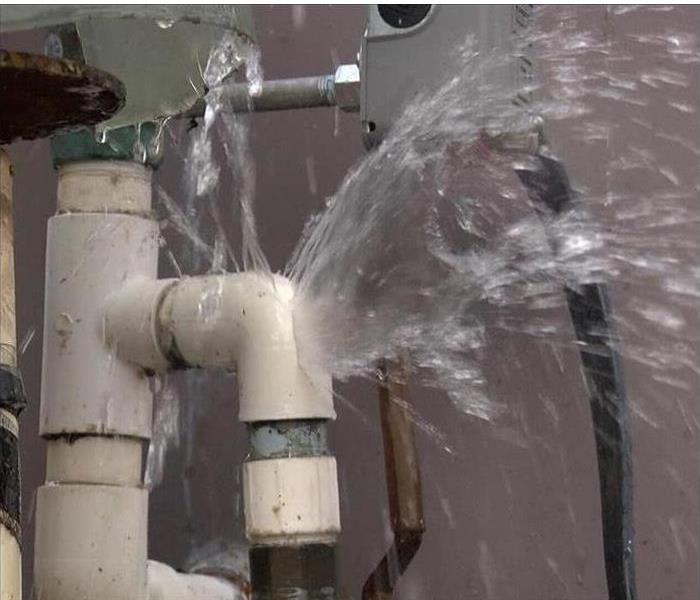 Busted pipe can cause water damage through out your home.
Busted pipe can cause water damage through out your home.
If you suffer water damage at your home or business it is important to attempt to mitigate the damage until a professional restoration company can take over. Your insurance company expects for you to be pro active while waiting on SERVPRO to arrive.
The following are some useful tips and tricks that will show your insurance company that you are working to minimize the damage.
- Turn off the water supply
- Call a plumber if necessary
- If the water is clean (not sewage) shop vac or towel up the standing water
- Place some fans out to create air flow
- Elevate your furniture out of the water
- Create a list of damaged belongings
- Take lots of photos
Just doing these steps will insure that you are trying to help.
Call SERVPRO of E. Jackson/SE Ingham Counties at 517-782-8533
Ice Dam
2/22/2019 (Permalink)
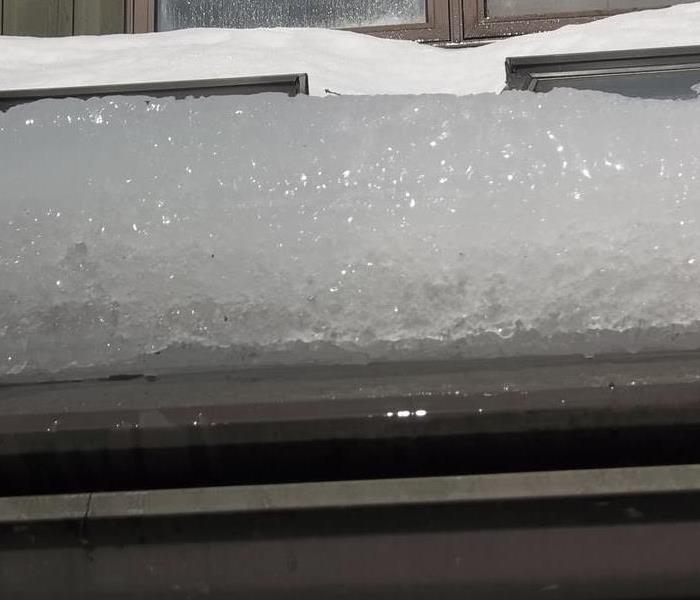 Ice Dam on roof
Ice Dam on roof
An ice dam is a ridge of ice that forms at the edge of a roof and prevents melting snow (water) from draining off the roof. The water that backs up behind the dam can leak into a home and cause damage to walls, ceilings, insulation, and other areas.
Ice buildup on your roof can cause significant damage to your home. ... Ice dams are usually caused by poor ventilation in your attic. The warmer attic air melts the snow on your roof and the melting snow runs down your roof and under areas such as gutters before it is re-frozen by the colder outside air.
If you experience damage to the interior of your home, call your insurance company. Then call SERVPRO of E. Jackson/SE Ingham Counties. Once the ice has been removed, we can determine where there is moisture inside and get that dried.
Faster to Your Jackson Water Damage
8/12/2016 (Permalink)
Flooding and water emergencies don’t wait for regular business hours and neither do we. SERVPRO of E. Jackson & S.E. Ingham Co. provides emergency cleaning and restoration services 24 hours a day, 7 days a week—including all holidays.
Faster To Any Size Disaster
Flooding and water damage is very invasive. Water quickly spreads throughout your home and gets absorbed into floors, walls, furniture, and more. SERVPRO of E. Jackson & S.E. Ingham Co. arrives quickly and starts the water extraction process almost immediately. This immediate response helps to minimize the damage and the cleaning and restoration costs.
Need Emergency Service? Call Us 24/7 –(517) 782-8533
Water Damage Timeline
Within Minutes
- Water quickly spreads throughout your property, saturating everything in its path.
- Water is absorbed into walls, floors, upholstery, and belongings.
- Furniture finishes may bleed, causing permanent staining on carpets.
- Photographs, books, and other paper goods start to swell and warp.
Hours 1 - 24:
- Drywall begins to swell and break down.
- Metal surfaces begin to tarnish.
- Furniture begins to swell and crack.
- Dyes and inks from cloth and paper goods spread and stain.
- A musty odor appears.
48 Hours to 1 Week:
- Mold and mildew may grow and spread.
- Doors, windows, and studs swell and warp.
- Metal begins to rust and corrode.
- Furniture warps and shows signs of mold.
- Paint begins to blister.
- Wood flooring swells and warps.
- Serious biohazard contamination is possible.
More Than 1 Week:
- Restoration time and cost increase dramatically; replacing contaminated materials and structural rebuilding may be extensive.
- Structural safety, mold growth, and biohazard contaminants pose serious risks to occupants.
About SERVPRO of [[Franchise Name]]
SERVPRO of E. Jackson & S.E. Ingham Co. specializes in the cleanup and restoration of residential and commercial property after a fire, smoke or water damage event. Our staff is highly trained in property damage restoration. From initial and ongoing training at SERVPRO’s corporate training facility to regular IICRC-industry certification, rest assured our staff is equipped with the knowledge to restore your property.
IICRC
7/27/2016 (Permalink)
SERVPRO of E. Jackson & S.E. Ingham County is an IICRC firm. The Institute of Inspection, Cleaning and Restoration Certification (IICRC) creates the standards for the restoration industry and provides training and certification to restoration companies. IICRC Certified Firms have the right to display the IICRC Certified Logo.
IICRC Certified Firms must
• Present accurate information to consumers and conduct business with honesty and integrity.
• Require a technician on all jobs who has been formally trained and passed all required tests.
• Require a continuing education program to keep technicians up-to-date on the latest changes in the industry.
• Maintain liability insurance to protect all parties in the event of an accident.
• Maintain a written complaint policy and agree to Better Business Bureau or similar arbitration to resolve disputes, and accept the conclusions and recommendations of arbitration.
The IICRC Develops The Standards For The Restoration Industry
The IICRC has been the driving force in establishing the main industry standards and reference guides for professional carpet cleaning, water damage restoration and mold remediation. These IICRC standards take years to develop and require the coordination of experts in the field: manufacturers, industry organizations, insurance professionals, training schools, contractors, and public health professionals.
Every five years, the standards are reviewed and updated. The water damage restoration field changes rapidly with advancements in technology and science, and therefore the standards must evolve to keep pace.
About SERVPRO of East Jackson & S.E. Ingham County
SERVPRO of E. Jackson & S. E. Ingham County specializes in the cleanup and restoration of residential and commercial property after a fire, smoke or water damage event. Our staff is highly trained in property damage restoration and we are an IICRC Certified Firm. We believe in continuous training: from initial and ongoing training at SERVPRO’s corporate training facility to regular IICRC-industry certification, rest assured our staff is equipped with the knowledge to restore your property.
Water
7/27/2016 (Permalink)
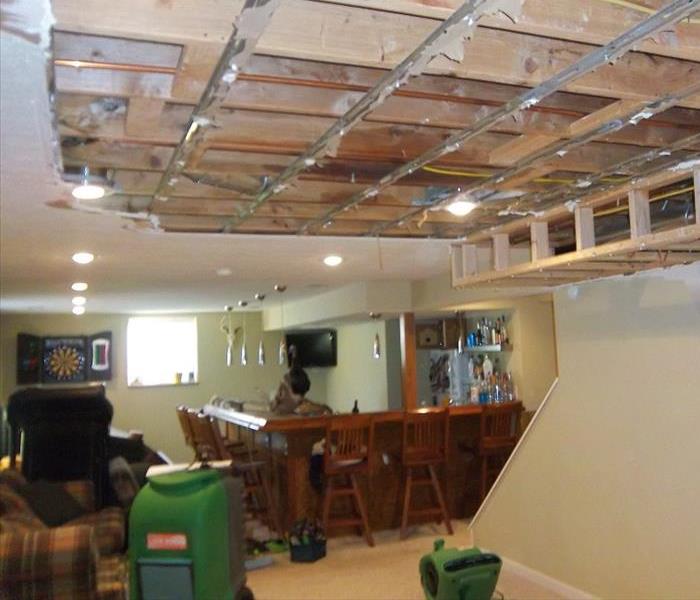 This is part of the drying process for the customer that had the washer over flow in their home.
This is part of the drying process for the customer that had the washer over flow in their home.
Water is very intrusive. Water left on at an outside spigot can quickly penetrate your foundation. Left on at a bathroom or kitchen sink can be catastrophic.
Recently we were called out to a home where the washer overflowed in a laundry room on the first floor, trapping water between the main level flooring and finished basement ceiling. The home was recently remodeled and the homeowner was afraid that the carpet may not be salvageable.
We were able to remove the ceiling in the basement to release the trapped water. We set equipment to dry the ceiling, floor joists and "floated" the carpet by placing air movers underneath.
Here at SERVPRO of E. Jackson & S.E. Ingham Co., we listen to your concerns, and understand what is most important to you.
 Regardless of the cause of the flooding, SERVPRO of Jackson/SE Ingham County has the team to help you recover from any disastrous event.
Regardless of the cause of the flooding, SERVPRO of Jackson/SE Ingham County has the team to help you recover from any disastrous event.


 24/7 Emergency Service
24/7 Emergency Service








